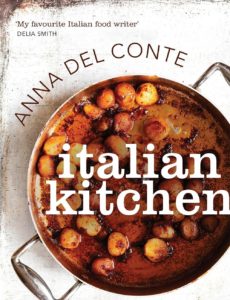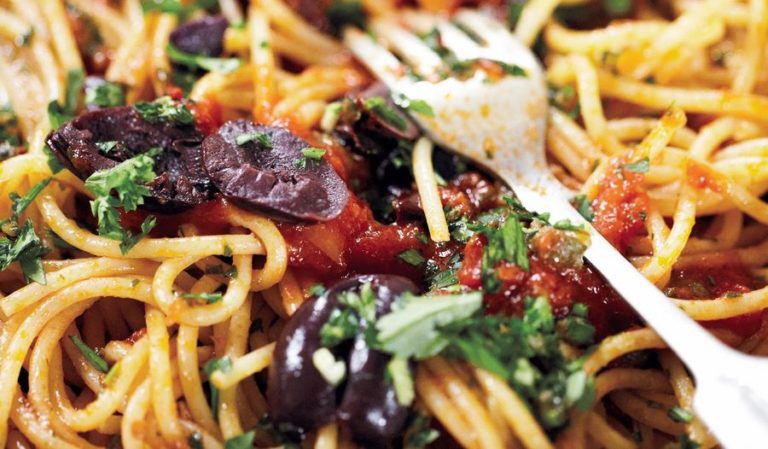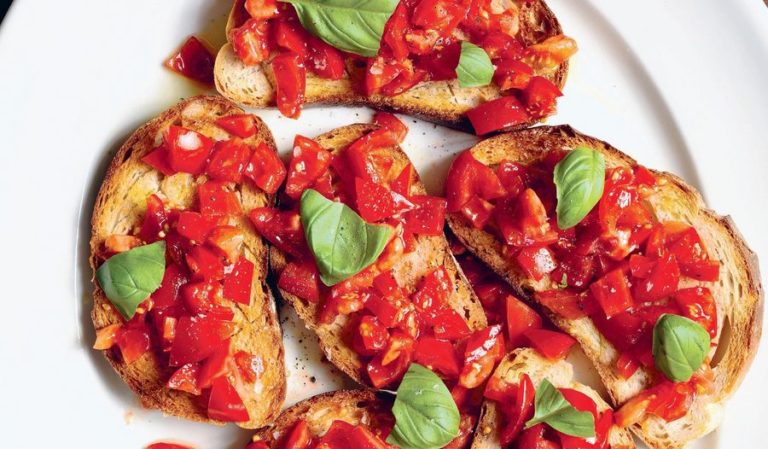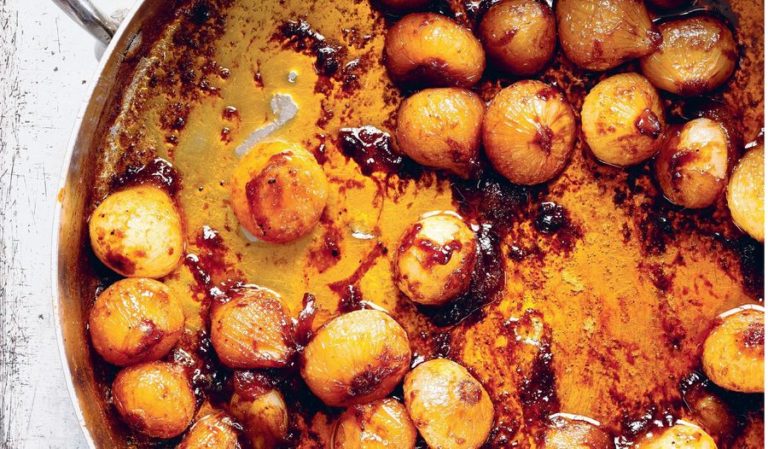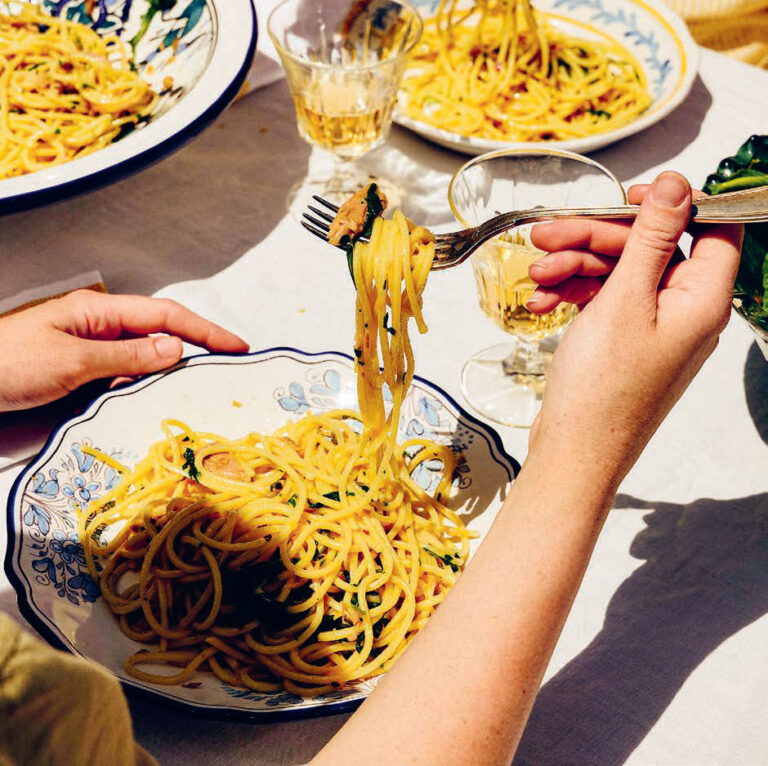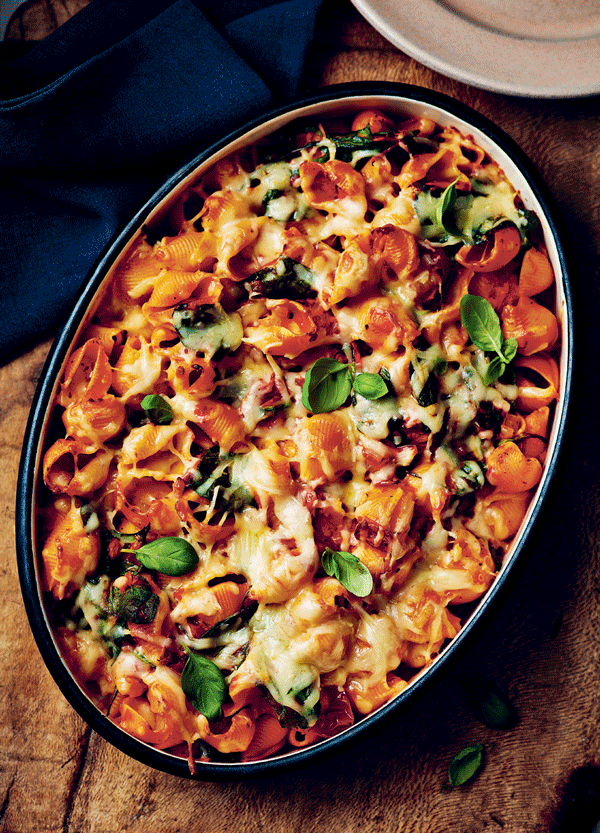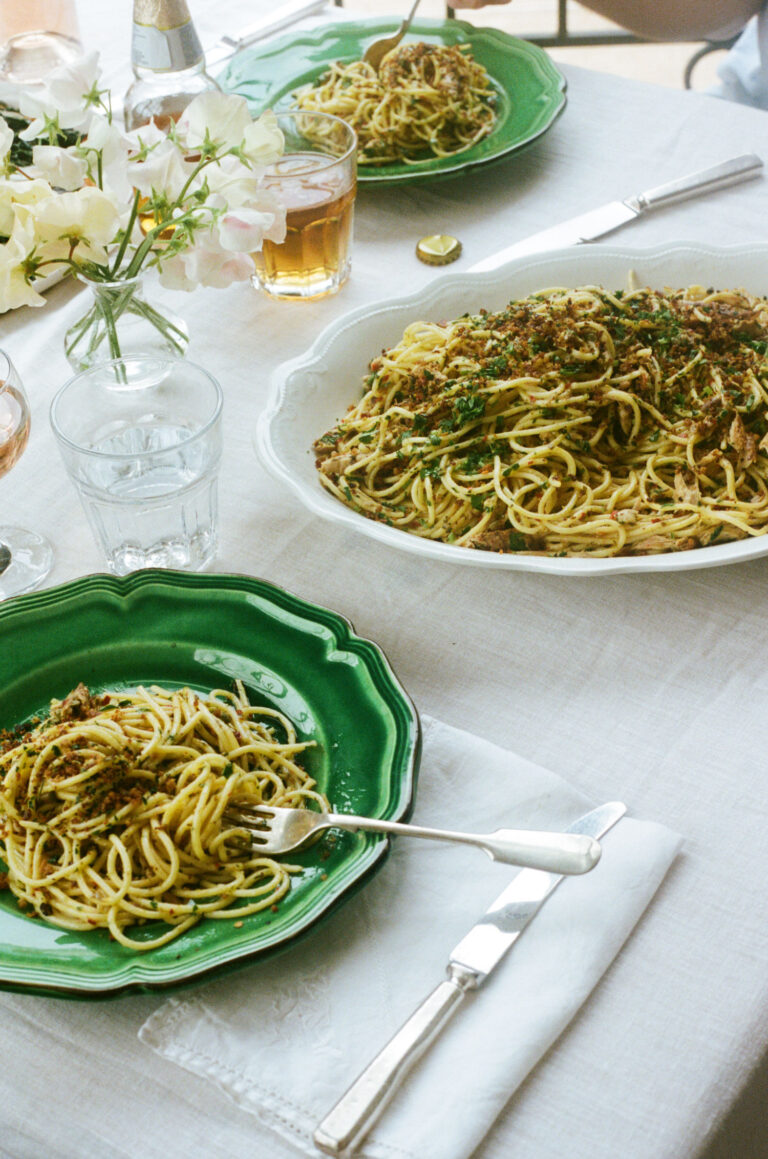Meat Ravioli
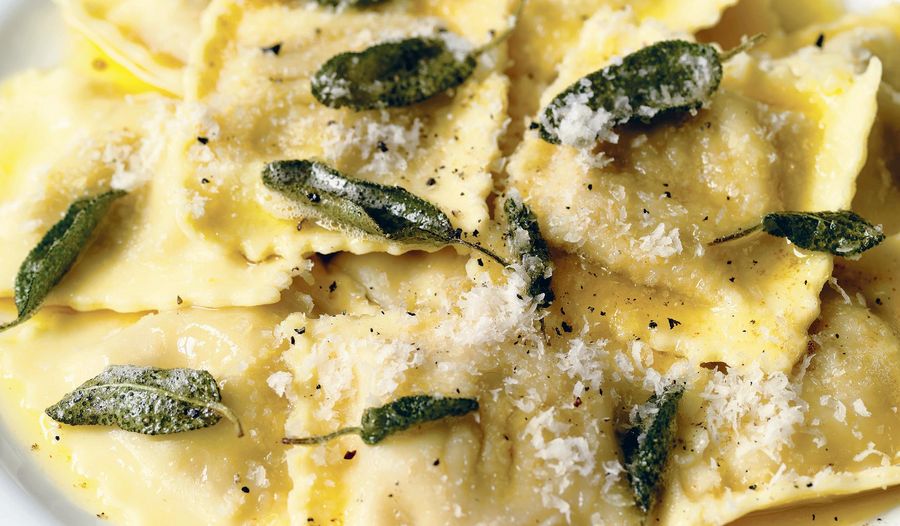
Anna Del Conte her authentic Italian recipe for Meat Ravioli, or Ravioli con Carne. Homemade pasta, rich filling and a buttery dressing make this dish a real treat.
Introduction
When I was a child in Milan, ravioli were one of the dishes I loved to make. They can be fi lled with meat, pumpkin, spinach or even fi sh. Meat ravioli were my favourite and, indeed, are the traditional – and the most popular – ravioli, served with melted butter fl avoured with fresh sage and garlic. Here is my family recipe.
Ingredients
| For the pasta dough: | |
| 300g | Italian 00 flour |
| 3 | eggs |
| For the filling: | |
| 1 tbsp | olive oil |
| 75g | unsmoked pancetta, very finely chopped |
| 350g | lean minced beef |
| 150ml | meat stock |
| 1 sprig | of rosemary |
| sea salt and freshly ground black pepper | |
| 100g | Parmesan, freshly grated |
| 1 | egg |
| ¼ tsp | ground cinnamon |
| For the dressing: | |
| 60g | unsalted butter |
| 2 | bruised garlic cloves |
| 6-8 | fresh sage leaves, torn into smallish pieces |
| 75g | Parmesan, freshly grated |
Method
First make the pasta dough and leave it wrapped in cling film while you make the filling.
To make the pasta dough: Put most of the flour on the work surface and make a well in the centre. Place the rest of the flour to one side. Break the eggs into the well. Beat them lightly with a fork for about 1 minute, then draw the flour in gradually from the inner wall of the well. I do this with 2 fingers because I find that gives me more control. When the eggs are no longer runny draw in enough fl our to enable you to knead the dough. At this stage you might have to add the flour you set aside, and even a little more from the bag, which you should keep at hand. You should add enough flour so that the dough is no longer sticky. (It is not possible to give the exact amount of flour needed because it depends on the absorption capacity of the eggs and the humidity of the kitchen.) Work until the flour and eggs are thoroughly amalgamated, put the dough to one side and scrape the work surface clean. Wash and dry your hands.
Note: It is easier for a beginner to stretch a soft dough, though a dough that is too soft may stick and tear and become unmanageable. You can make a harder dough by replacing half the flour with fine semolina. This dough is difficult to work by hand, but it can be rolled out using the hand-cranked machine. It makes a pasta that is less delicate and less smooth in texture, but with a definite flavour, particularly suitable for vegetable sauces.
Proceed to knead the dough by pressing and pushing with the heel of your palm, folding the dough back, giving it half a turn and repeating these movements. Repeat the movements for about 10 minutes if you are going to make your pasta by hand, or 2–3 minutes if you are going to use a machine. Wrap the dough in cling film and leave it to rest for at least 30 minutes, though you can leave it for up to 3 hours, or even overnight.
To prepare the filling: heat the oil and pancetta in a saucepan and, after about 5 minutes, throw in the minced beef. Fry the meat, breaking it up with a fork so that it all gets properly browned, which will take just over 5 minutes. Pour in the stock, then add the sprig of rosemary and the salt and pepper, and cook gently for about 30 minutes. Stir frequently.
When the meat is cooked, discard the rosemary sprig, spoon the mince into a bowl and let it cool for 10–15 minutes. Mix in 50g of the cheese, together with the egg and the cinnamon. Taste and check the seasoning.
Now start kneading the pasta dough, by hand or by machine, and when this is done make the ravioli.
Put the pasta dough on the work surface and cut off about one quarter, leaving the rest wrapped in cling fi lm. Thin the dough down in the pasta machine notch by notch as far as the last but one notch. If you are rolling out by hand, roll the dough out as thin as you possibly can.
Work on one strip of dough at a time, keeping the remaining strips covered with a clean tea towel. Place mounds of the filling (about ½ tsp each) in a straight line along the length of the strip of dough, spacing them about 4cm apart and the same distance from the one long edge. Fold the dough lengthways over the filling and, using a pastry wheel, trim
the edges where they meet. Then cut into squares between each mound of filling. Separate the squares and squeeze out any air that may be caught in the ravioli. Seal them tight with moistened fingers.
Place the ravioli, well separated, on clean dry tea towels. Cut off another quarter of the dough, knead in any trimmings from the previous batch and thin the strip down as before. If you are rolling out by hand, keep the dough you are not working on well covered or it will dry up and become brittle. Continue making more ravioli until you have used up all the filling and/or all the dough. Leave the ravioli uncovered until they are properly dry; you can then cover them with another cloth.
Bring a large saucepan of water to the boil with 1½ tbsp salt. Drop the ravioli gently into the pan. (If your saucepan is not large enough, cook the ravioli in 2 batches and keep the first batch warm in a very low oven, dressed with some of the flavoured butter – see next step.) Give the ravioli a gentle stir with a wooden spoon and cook in simmering water – not fast-boiling or the ravioli might break – for 3–4 minutes until they are done. The best way to tell if they are done is to try one: the pasta should be still firm to the bite – al dente – round the edge. Lift the ravioli out with a slotted spoon and transfer them immediately to a heated and buttered bowl. Pat them dry with kitchen paper.
While the ravioli are cooking, make the dressing. Melt the butter in a small saucepan with the bruised garlic and the sage leaves. Fry gently until the sage leaves start to sizzle and the butter begins to turn golden. Remove and discard the garlic. Pour this simple dressing over the ravioli as soon as they are cooked and sprinkle with Parmesan. Serve at once, handing round the remaining cheese in a separate bowl.
Reviews
Have you tried this recipe? Let us know how it went by leaving a comment below.
Thank you for your rating. Our team will get back to any queries as soon as possible.
Please note: Moderation is enabled and may delay your comment being posted. There is no need to resubmit your comment. By posting a comment you are agreeing to the website Terms of Use.

